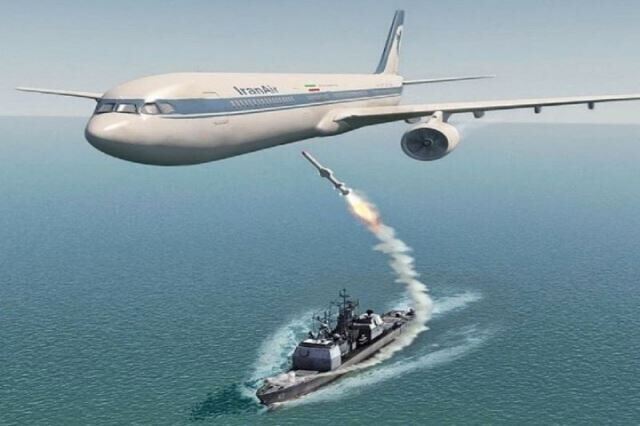ID :
634768
Sun, 07/03/2022 - 17:03
Auther :
Shortlink :
https://www.oananews.org//node/634768
The shortlink copeid
34 years after US downing of Iranian passenger flight

Qeshm, IRNA – July 3 marks the anniversary of a human tragedy for Iranians when they remember the downing of flight 655 in 1988 by two missiles that led to the killing of 298 innocent people.
34 years ago this day, flight number 655 of Iran Air departed Bandar Abbas in southern Iran for Dubai, not knowing that this would become a one-way flight for all of the passengers and a thorny memory for the Iranian nation.
As the airplane approached Hengam Island on the western mouth of the Strait of Hormuz in the Persian Gulf, it was shot by two surface-to-air missiles fired from the guided-missile cruiser of the United States Navy USS Vincennes at the order of Captain William C. Rogers.
The commercial airliner sunk in the Persian Gulf with all of its 298 passengers. The US initially announced that its battleship had targeted an Iranian F-14 fighter jet, but then it changed its narrative to a misfire after the plane type was revealed. However, the unfounded claim was invalidated as more evidence surfaced.
US officials scrambled to free themselves from the shame by saying that the airbus passenger plane was flying off its normal route and that the US battleship had frequently tried to contact the airplane but received no response.
However, the geolocation of the plane’s debris and the bodies of the victims floating on the Persian Gulf was indicative of the fact that the plane was on the correct route. Moreover, the sophisticated equipment on the USS Vincennes ruled out any chance for the misidentification of the plane as a fighter jet.
Even more, Captain Rogers was able to hear the pilot’s communications and easily conclude that the flight was a commercial one, especially since an airbus is completely different than an F-14 fighter jet in terms of size, volume, form, and airborne capabilities.
The claim that Rogers had sent warnings on commercial communications channels also couldn’t be true because all pilots flying in the region would always stay tuned to the emergency radio channel.
The arguments and other proofs that surfaced over time proved that the unprecedented downing was intentional.
The Islamic Republic of Iran wrote to the president of the United Nations Security Council to request an emergency meeting to address the shooting down of Flight 655. The Security Council, however, only issued a resolution to express regret over the downing of the civil airplane.
In addition to the Security Council and International Court of Justice, Iran filed a complaint International Civil Aviation Organization (ICAO) but the entity failed to make a decision without politicization. ICAO only expressed regret and solidarity with the victims’ families instead of conducting technical investigations and giving solutions to the Security Council.
While the tragedy constituted one of the biggest violations of human rights, international law, and international aviation law in history, the battleship’s captain was awarded the Legion of Merit decoration.
The case ended only in the US’ paying a settlement amount after a few years because of US obstruction and inaction from international organizations.
The incident which has still remained alive in the memories of the Iranian people after 34 years is a symbol of clear ignorance about the human rights that are repeatedly violated by individuals and governments or in some cases unilaterally interpreted and used as a vehicle.
The US’ long record of violations includes discrimination against people of color, the CIA’s torture scandal, espionage against various countries, illegal sanctions against other countries, broad support of the Zionist regime in the blockade against Gaza, and support for ISIS.
Follow us on Twitter @IrnaEnglish





